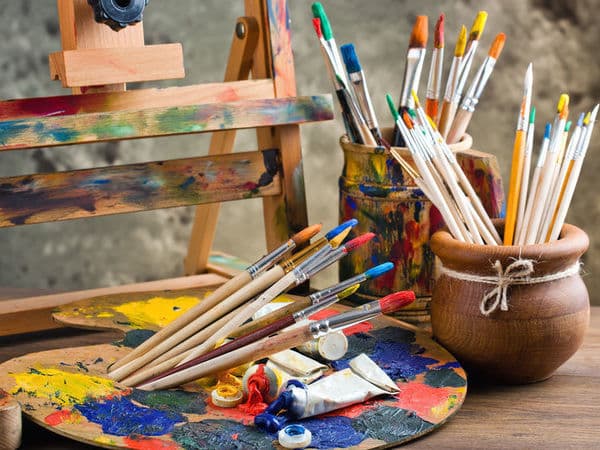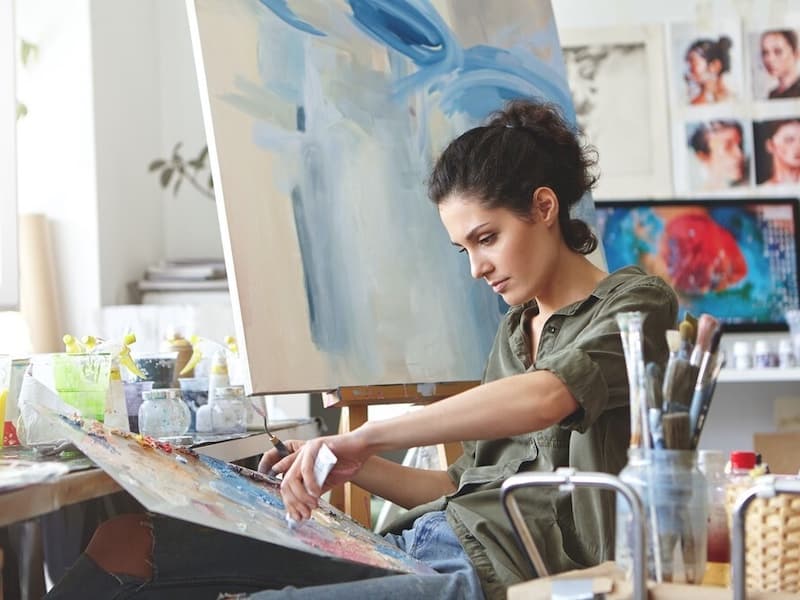Art is not just the ability to hold a brush or pencil, it is a way of seeing the world through the prism of creativity and transferring your emotions onto canvas or paper. But how to turn this hobby into a profession? Becoming a professional artist means not only developing your talent, but also learning discipline, mastering technical skills and figuring out how to make art a part of your life. In this article, we’ll tell you where to start learning, how to avoid common mistakes, and what it takes to make your creative journey lead to success. Ready to take the first step towards your dream? Then let’s get started!
Why it’s important to start with the basics
Before diving into the world of professional art, it’s important to lay a solid foundation. Without basic knowledge and skills, even the most talented artist can run into difficulties. The basics are the very “skeleton” on which all your creativity is built. They not only help you avoid mistakes, but also give you the freedom to experiment in the future.
Learning the basics of drawing and composition
- Proportion: Knowing how to correctly represent the size and proportion of objects is the first step to realistic drawing. For example, if you are drawing a person, it is important to understand how the head, torso, and limbs relate to each other.
- Perspective: This is what makes your work look three-dimensional and alive. Linear and aerial perspective help create the illusion of depth.
- Light Shading: The play of light and shadow adds realism to a drawing. Learn to see how light falls on objects and how this affects their shape.
Color Work
- Color wheel: This is a tool that helps you understand how colors interact with each other. Explore primary, complementary, and analog colors.
- Experiment with tones: Try mixing colors to see how they affect the mood of the work. For example, warm tones create a feeling of coziness, while cool tones create a sense of calm or detachment.
By starting with the basics, you not only improve your technical skills, but also learn to see the world through the eyes of an artist. This is the first and most important step towards professional art.

Choosing a direction in art
Art is multifaceted and it is important to find your niche. The direction you choose depends on your preferences and goals. Here are the main options:
Painting
- Oil: Suitable for deep, rich colors and smooth transitions.
- Acrylic: Quick-drying, versatile material for experimentation.
- Watercolor: Ideal for airy, delicate works, but requires precision.
Graphics
- Pencil: Great for sketching and detailed work.
- Ink: Creates contrasting, graphic images.
- Digital tools: Open up new possibilities for experimentation.
Digital Art
- Programs: Photoshop, Procreate, Illustrator – tools for creating professional works.
- Advantages: Easy editing, wide possibilities for creativity.
- Applications: In demand in games, movies, advertising and design.
Choosing a direction is a step towards creating a unique style. Try different techniques to find what resonates with your inner world.
How to organize the learning process
Learning art requires a systematic approach so that progress is steady and visible. Start by setting clear goals: define what you want to accomplish, whether it’s exhibiting, building a portfolio, or learning a new technique. Then create a schedule, setting aside time to practice every day, even if it’s just 30 minutes. Regularity is key to developing your skills. Don’t forget to look for inspiration: visit museums, galleries and study the works of famous artists to broaden your horizons and find new ideas. If you want to distract and relax after the creative process, use ybets promo code to get a no deposit bonus at YBETS Casino and enjoy gambling without investment.
Tips for effective learning:
- Set goals: Clearly state what you want to accomplish. For example, it could be to master portraiture or to create a series of works in a particular style.
- Create a schedule: Practice every day, even a little at a time. Take time for both technical exercises and freehand creativity.
- Seek inspiration: Study art in museums, books and online. Analyze how great artists worked with composition, color, and light.
- Experiment: Try new techniques and materials. For example, if you are used to pencil, try watercolor or digital graphics.
- Analyze your progress: Review your work regularly to see your growth. Make a scrapbook or folder where you keep your sketches and finished work for comparison.
Practice and feedback
Practice is the foundation of any skill, but without feedback, progress can slow down. Feedback helps you see your weaknesses and realize what you need to work on. Here’s how to make the process as effective as possible:
- Draw every day: Even small sketches help develop skills. Take time for both technical exercises (such as drawing geometric shapes or sketches) and freehand creativity. This builds muscle memory and improves your confidence in your work.
- Show your work: Share your work on social media, specialized platforms (e.g. ArtStation, Behance) or creative communities. This not only helps you get feedback, but also motivates you to move forward.
- Find a mentor: Courses, workshops or one-on-one sessions with a professional will help you progress faster. An experienced artist will point out mistakes you may not have noticed and give you valuable advice on how to improve your technique.
Regular practice and constructive feedback are the two pillars on which professional growth is built. Don’t be afraid of criticism, because it helps you get better and brings you closer to your goal.
How to start earning money from art
Being a professional artist is as much about creativity as it is about turning your skills into a source of income. Monetizing art requires a strategic approach and a willingness to go beyond the studio. Here are a few ways to help you start making money from your talent:
- Sell your work: Participate in exhibitions, fairs or online platforms (e.g. Etsy, Saatchi Art, ArtFinder). It’s a great way to show your work to a wider audience and find buyers. Don’t forget social media – Instagram and Pinterest can be powerful tools for promotion.
- Orders: Offer your services for portraits, illustrations, designs or even interior painting. Many clients are looking for unique work for personal or commercial projects. Build a portfolio and actively offer your services on platforms like Fiverr or Behance.
- Teaching: If you’ve reached a high level, start teaching others. Hold master classes, online courses, or one-on-one sessions. This not only generates income, but also helps you gain a deeper understanding of your skills.
Earning money from art is an opportunity to combine passion and profession. The main thing is to be active, look for opportunities and not be afraid to experiment with formats.
